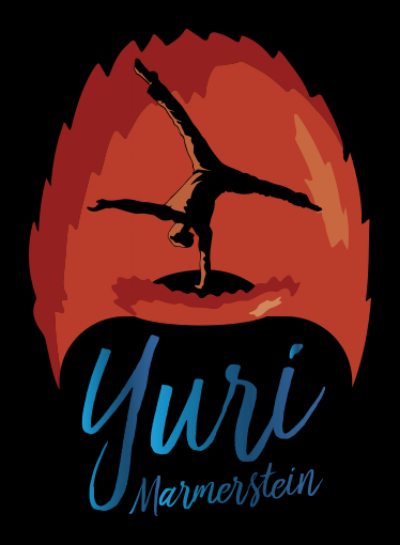Inversion Investigation Seminar
Spend a weekend learning about how to develop your hand balance practice. Get a better awareness of your own body and learn how to approach your long term goals while getting hands-on feedback and advice from a professional. A course like this can help put you on the right track towards making progress and avoid potential mistakes.
Even if you have no immediate goals of becoming a hand balancer, this is still a very interesting skill to learn about because the body control and awareness required for it are completely unique.
The classes can be split into 2 levels.
Note that while the beginner sessions focus on basics, this is where I offer more theory and teaching cues so these classes can also be useful for instructors.
Likewise even though the int/adv classes have a recommended skill prerequisite, beginners are still welcome to attend. The skills may be beyond their level, but they will have the option to work scaled down versions of the exercises appropriate to their abilities. A lot can also be learned from observing the higher level students while listening to the theory.
All students are welcome to attend the whole weekend for the full experience, and will receive a small discount for doing so.
One more note is that ultimately the group determines the session, so beginner and advanced sessions can be very different depending on the level of the community. There is not a set workshop that I teach but rather I try to adapt my material to the group.
Depending the detail we go into we may not cover all of the topics listed, or we may completely go off topic on a separate tangent. I’m absolutely fine with this as long as it’s what the group wants to do; this is what makes each workshop unique in its own way.
Final note is that all of the skills and concepts we are discussing are learned over a long term. I have no expectation for a student to “learn” or “master” their handstand over the weekend, and neither should they(though it is common to see marked improvement). It’s better not to think of this weekend as learning the handstand but learning more about handstands to apply that knowledge into one’s personal practice.
The beginner sessions will focus more on physical preparation, theory, and development of the basic techniques in order to get students more comfortable on their hands and create a good base for more advanced skills.
Prerequisites:none
Topics covered:
-Physical Preparation for wrists and shoulders
-Alignment for the handstand, and how to get around restrictions
-Arm support using the body’s physical structure to its advantage
-Building comfort and awareness during inversion
-How use the wall to build your HS without building bad habits for the future
-How to safely bail out of the handstand to increase confidence and help prevent potential injury
-Developing balance in the handstand using a deliberate and methodical method
-Entries into the handstand and how to make them consistent
-Developing confidence and consistency in the freestanding balance
-Different methods of using the body to correct the balance to increase control and versatility
-Learning to break the line and return in preparation for advanced skills
-Handstand Walking
-Spotting a handstand in a way that will help the student learn on their own
-Teaching cues to help dispel the ‘common myths’ and bring about efficiency in learning
Intermediate/advanced sessions are for students with experience and will focus more heavily on skill development at a faster pace.
Recommended prerequisites:
-a consistent 30 seconds freestanding handstand with a decent line. Not necessarily required but students will get more practical benefit from the sessions having met this basic proficiency. As stated before, beginners are still absolutely welcome and will be given variations of the exercises appropriate to their level,
Topics Covered:
-Refinement of basics to a high degree of precision
-Adding complexity to the basics to increase the challenge
-Testing the balance to sharpen the reflexes
-Common and uncommon handstand shapes and transitions between then
-Movement in a static handstand
-Technique for press handstand and stalder presses
-Handstand Pushups
-Hollowback or Mexican handstand development
-Jumping in a handstand
-Developing the one arm handstand(Very complex topic with many sub-topics of its own)
-Theory on how to stay healthy and reduce injuries during the training
-Theory on how to structure training for skills, strength, conditioning, and endurance

